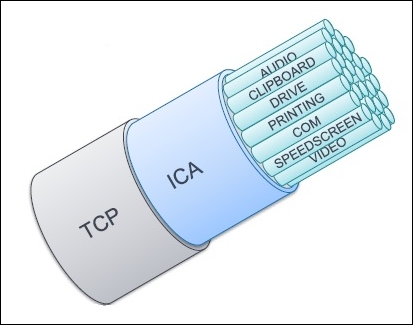The most appropriate place to discuss quality of service (QoS) is in the networking section. We discuss QoS for XenDesktop here.
Citrix supports QoS with the ICA/HDX protocol, and it is supported in the Citrix Receiver, as well. Within the ICA/HDX protocol, they have what are called virtual channels. Virtual channels exist so that control can be applied to specific functions such as printing, audio, keyboard, mouse, video, drive mapping, and so on. There are 32 maximum channels available for each ICA/HDX session. The following diagram shows the architecture of virtual channel:

Multi-stream ICA/HDX provides the ability to configure multiple TCP connections to carry the ICA/HDX traffic between client and server. You can have up to four independent TCP streams, and up to five independent UDP streams. Each of these streams can be associated with a different class of service for QoS.
You can configure the class of service for each stream by...



